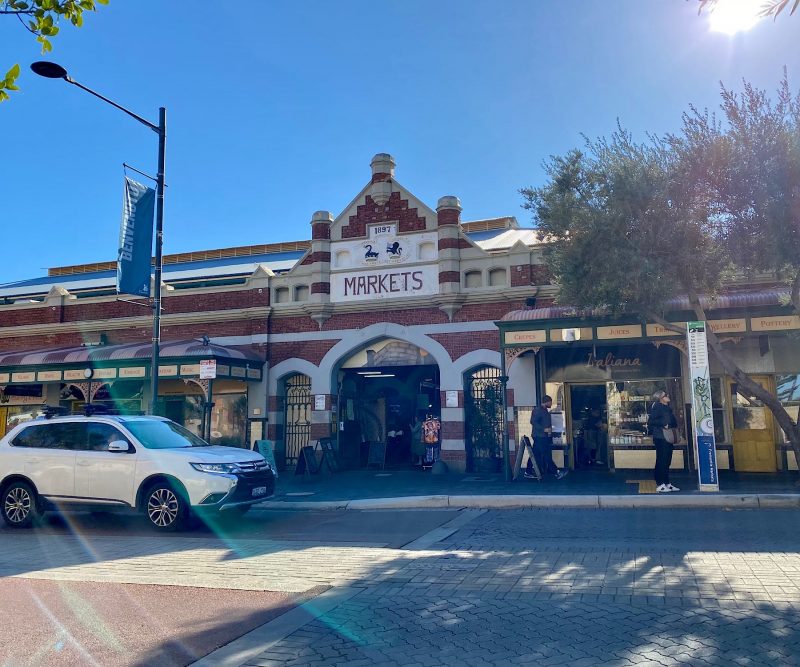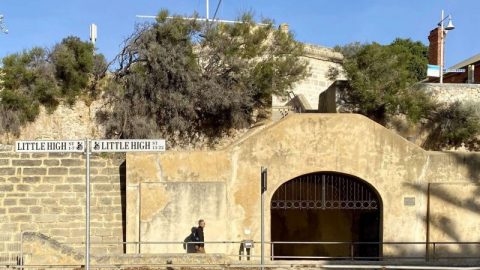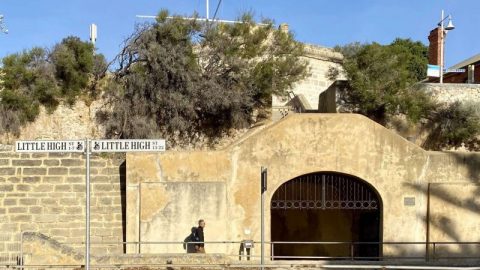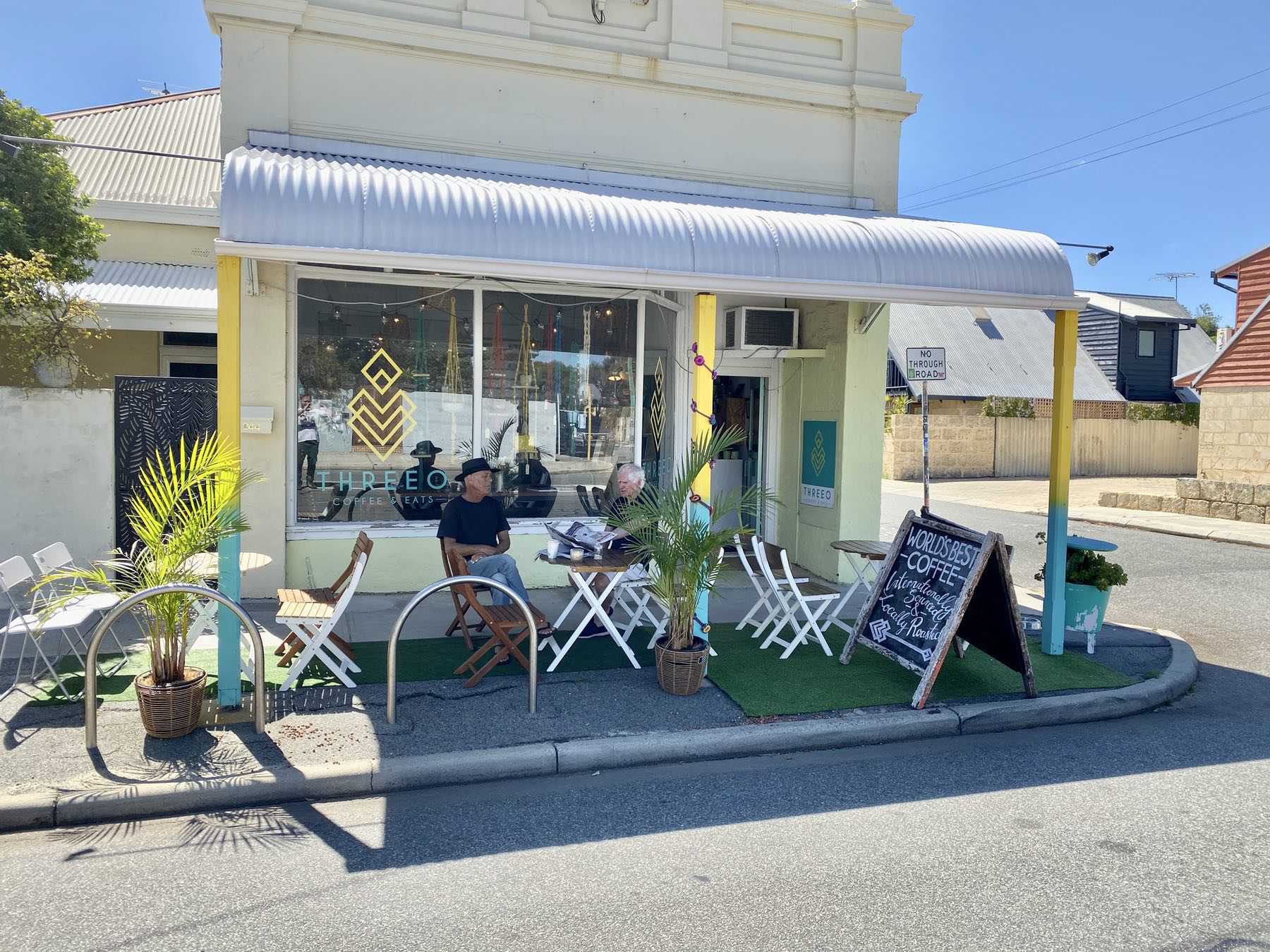The Fremantle Markets is a publicly-owned (through the Fremantle City Council) national heritage-registered complex in the centre of Fremantle that has been leased, for more than 40 years to, effectively, a single family (the Murdochs) via their operating company. The current lease expires in about 3 years’ time.

In early May, the public became aware that the Finance & Policy Committee (FPOL) of the Fremantle City Council was considering a recommendation from Officers to enter into an exclusive new arrangement for a further 20 years with these current tenants, which would mean that there was no opportunity for competitive tendering or exploration of other opportunities, operators or operating methods.
At its meeting on 10 May, FPOL supported the plan but also voted to send the decision to the full Council for debate on Wednesday May 24th.
David Parker, together with many others, spoke on the debate on Wednesday as a concerned Fremantle resident and ratepayer, arguing in favour of a competitive and controlled tendering process. The full Council however, decided otherwise and endorsed FPOL’s decision to proceed with the consultation for the Business Plan exclusively with the current tenants. The Business Plan with these proposed arrangements will now be sent out for public comment.
Here is David’s take on the issues involved:
The Fremantle Markets lease was last entered into in 2008 and has somewhat more than 3 years to run.
Correctly, in my view, the Fremantle City Council decided that it needed to commence dealing with the issue well ahead of that time because of uncertainty that could be created ahead of the lease expiry. It identified two possible options to do this – either to structure a competitive tender where it could have set all the minimum required tender conditions, incorporating necessary lease conditions in the tender documentation, including protections for existing stall holders, contribution to, and control over timing and quality of capital expenditure, and other matters of importance to both the revenues, the heritage and the tourism and job creating aspects of the Markets; or to enter into exclusive negotiations with the existing tenant of 40 years, develop a “Business Plan” based on that negotiation (which incorporates no immediate rental increase after 15 years) and release it for public comment prior to a new lease to be entered into for a further 20 years with that tenant.
Despite Council having never adopted any public tender process during the past 40 years to identify and maximise the opportunities on behalf of the public it represents for both revenue and quality of product, and despite reported community and stallholder dissatisfaction with the existing arrangements, it (in my view wrongly) chose the second route of an exclusive negotiation with the existing tenant which was confirmed at a full Council meeting on Wednesday 24th May, where most Councillors acknowledged and expressed confidence and support for the fact that the almost certain end result will be that the lease would be renewed with the existing tenant. To be fair, it is possible that some terms could be improved upon and better defined following the public consultation, if the Council exhibits the strength to do so.
According to the tabled Business Plan, the lease over the Fremantle Markets represents both the highest value lease, and the one requiring the most short-term capital expenditure across the City’s total portfolio. In other words, it is vital for Council (and thus ratepayer) revenues and expenditures.
In preparation for the plan, the City obtained valuations as to the lease from a reputable valuer which showed that the current and proposed base rent was about $100,000 p.a. (or 18%) lower than its own valuer’s assessment of what it should be. One of the required criteria for choosing the “Business Plan/consultation” route is that the premises are obtaining market rent. The Council’s own valuation shows that this is not currently the case, and the Business Plan identifies that it is not proposed to be the case.
The arguments adopted in the Business Plan and by most of the Councillors who spoke on the issue for not proceeding to tender would, if accepted, make it virtually impossible for there ever to be a competitive or market-testing tender, which means that the existing tenant has, effectively, captured a substantial community asset.
Some details and issues:
• The base rental that is proposed for the new agreement is the same as that in the 2007 agreement/business plan which was adopted in 2008 (15 years ago!). As stated above, this is less than the Council’s own valuer’s view of what the market should be (by 18%) and in that time, according to REIWA, retail rentals in Fremantle have increased on average by 2.5%/year which would take the base rate more than 30% higher. At the same time, average stall holder lease payments (i.e., the amount the head tenant gets from its sub-tenants) have more than doubled.
• An appendix to the Business Plan is a document entitled “Lease Essential Elements” which sets out what the Council regards as the important matters to be incorporated in a future lease. This does not include any capital expenditure of any substance. However, in very general terms, the Business Plan text identifies an “upfront” “up-to-$3m” commitment by the current tenants for (what is generally agreed are absolute minimum) necessary works on the premises. Given that this is a major commitment, it should surely be regarded as an “essential element” if it is to be enforced.
In fact, the history of the Fremantle Markets is one of frequently promised, but rarely if ever undertaken, substantial remedial work. Thus, for there to be any confidence in, and capacity for enforcement of, this expenditure and this work, it should be expected that it would be essential to include it precisely in the terms and conditions in the lease, particularly as the alternative is that the FCC (i.e. the ratepayers) will have to bear substantial costs as landlord. This is one of the major elements that one hopes can be clarified during the consultation period. Is this extra money that is being paid over by the tenant and if so under whose control? Also, in terms of the quality of the work on a national heritage asset, who will supervise both the design and approve the execution of the works?
• The identified upgrades include (for example) fire extinguishers and new electrical cabling which – one would hope – should have been there all along and should be regularly renewed as per Fire Brigade and electrical requirements on all premises.
• The described track record of the current tenant (according to the tabled Business Plan) is an expenditure of $370,000 on all maintenance in the past 15 years, which is about $25,000 per year or about $6 per year per square metre of leased premises. This is hardly enough to clean the premises let alone maintain them.
• The Plan talks about a difficult so-called transition period of 3-5 years if there were to be competitive tender and a new tenant. This is nonsense. Firstly, there is a commercial, if not a legal, imperative on the existing tenant to retain the ongoing arrangements with its stall holders for as long as possible. Secondly, if the tender documentation is correctly prepared, all areas of concern such as novation of stallholder sub-leases to the new head tenant can be addressed, eliminating the concerns expressed at the meeting by a few stallholders as to their security of tenure (which, by the way, has been far from certain for many of them during some of the past 40 years).
• If, as suggested in the media, the Council had concern that the current tenant could take steps to in some way adversely deal with existing stallholders, or to try to force or encourage them to another location, then – if they were right – the current tenancy agreement could no doubt be brought to an early end for cause. Such unacceptable behaviour, if experienced, should be grounds for exclusion from continuing to participate in the tendering process.
• One matter that was positively clarified at the 24 May Council meeting, was that the Mayor acknowledged that she had been mis-advised, and therefore mis-spoke, as to the ownership of the name “Fremantle Markets”. It is now clear that this name is owned by the Fremantle City Council and must be relinquished to them on any termination of the lease. Also, it was brought up that several attempts by the current tenant to register (in its ownership) trade names or trademarks reflecting the Fremantle Markets brand had been rejected by the relevant authorities over the years.
• A tender document can and should contain required terms and conditions which must, at minimum, be observed by all tenderers. This would also deal with some of the other concerns that have been raised about rent-free periods and the like. It can also exclude certain courses of action which would prevent antagonistic approaches by any tenderer.
• It may be that the current tenant would win a properly conducted tender. But it would do so only on much better terms and having to commit to a more rigorous agreement with enforceable undertakings of the Council’s, rather than the tenant’s, choosing.
• There is no reason a tender process couldn’t begin well ahead of the lease expiry, but to apply from its termination date. There is nothing to stop a new head tenant from finalizing everything so as to be able to move ahead on Day 1 of the new tenancy. Based on my experience over the past 30 years, that is what happens in the commercial arena, if only because no tenant wants to pay rent for something that is not earning it money.
It appears from the media and the speeches made at Council that there is at least one well-resourced (in terms of both funds and experience) potential competitor for any tender. I have no personal knowledge of this, and am not arguing on their behalf. But the fact of their existence suggests that a tender process would likely be more successful than possibly the Council officers or Councillors feared. There could very well be several such offers. As set out above, competently prepared tender documentation would ensure that all the concerns as to the impact of such a process could be overcome.
Given the Council decision, it is critical that comprehensive comments are submitted by ratepayers and other interested parties on the Business Plan. It is still theoretically possible for the Business Plan route to be thrown out at the end of the consultation process, although based on the attitudes displayed in the meeting by most Councillors it would seem unlikely. The least that should be hoped for is a substantially improved and documented Business Plan, and thereafter a lease, with improved and enforceable terms.
This is a major asset of the ratepayers. Its disposition should be for their primary benefit.
By David Parker
WHILE YOU’RE HERE –
PLEASE HELP US TO GROW FREMANTLE SHIPPING NEWS
FSN is a reader-supported, volunteer-assisted online magazine all about Fremantle. Thanks for helping to keep FSN keeping on!
** Don’t forget to SUBSCRIBE to receive your free copy of The Weekly Edition of the Shipping News each Friday!







